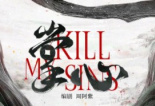Episode 9: Ying Long·What are you like?
Dragon, this mysterious and majestic creature, has been deeply rooted in the cultural tradition of the Chinese nation since ancient times.The images of dragons are ever-changing, but each one carries profound historical and cultural connotations.

In the Song Dynasty, which was nearly 800 years away from us, there was a painting called Nine Dragons. The image of the dragon in the painting was vivid, as if it were alive on the paper.They bared their teeth and claws, turning over the clouds and rain, showing a domineering attitude.This painting is not only a delicate depiction of the image of a dragon, but also a reflection of the social culture at that time.Dragon, as a symbol of imperial power, represents supreme power and majesty.
And when we go back to ancient China five thousand to six thousand years ago, we will see another completely different image of dragons.In the ruins of the Hongshan Culture, the dragon-shaped artifacts unearthed show another style.These dragons have smooth bodies, long snouts on their heads, flying manes, and hook-like bodies. They are known as “China's No. 1 Dragon”.This image of the dragon is more primitive and closer to the original intention of the dragon as a totem worship.
There is more than one dragon-shaped artifact unearthed from the Hongshan Culture, which shows that the worship of dragons began in ancient times.As a totem, the dragon represents the strength and faith of the tribe.By worshiping the dragon, people hope to receive blessings from the gods and ensure the prosperity and prosperity of the tribe.
Over time, the image of the dragon gradually evolved. From primitive totem worship to a symbol of imperial power, to today's cultural symbol, the dragon's status continues to change.But what remains unchanged is that the dragon has always been an important part of the Chinese culture. It represents the wisdom, courage and strength of the Chinese nation.









